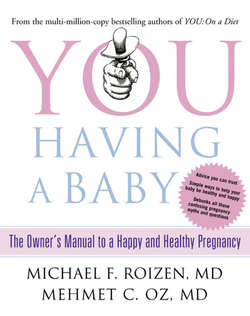Читать книгу You: Having a Baby: The Owner’s Manual to a Happy and Healthy Pregnancy - Michael Roizen F. - Страница 28
The Eggs
ОглавлениеFactoid: Though it happens rarely, women who lose their corpus luteum (through a ruptured cyst, for example) might need a progesterone supplement during the first trimester to help maintain the uterine lining until a placenta forms. Other candidates for progesterone supplementation include women who have a history of miscarriages, perimenopausal women, and those having in vitro fertilizations.
On the female side of the conception equation lie her eggs, which are fully formed and stowed away in her ovaries from before birth. Each mature egg contains one copy of each gene in the human genome—half the amount necessary for life. The maximum number of eggs that a woman will ever have is the number she has when she is a twenty-week-old fetus. She’ll have about 7 million of them then, 600,000 when she’s born, and about 400,000 at puberty. Once a woman hits puberty and menstruation begins, her ovaries release one of those eggs every twenty-eight or so days. During each cycle, even though multiple eggs start to develop, hormonal signals ensure that only a single egg will be released and the other eggs will regress. (It’s not wise evolutionarily to blow them all at once, so the body gives females an approximately thirty-year window in which to conceive.) Hormones also work to mature that ready-to-drop egg and to pop a hole in its sac. That hole works as an escape hatch, so the egg can slip out of the ovary and travel down the Fallopian tube, where it may be fertilized by sperm.* Tissue left behind in the ovary after the egg is released, called the corpus luteum, will produce hormones essential to successful pregnancy if the egg is fertilized.
